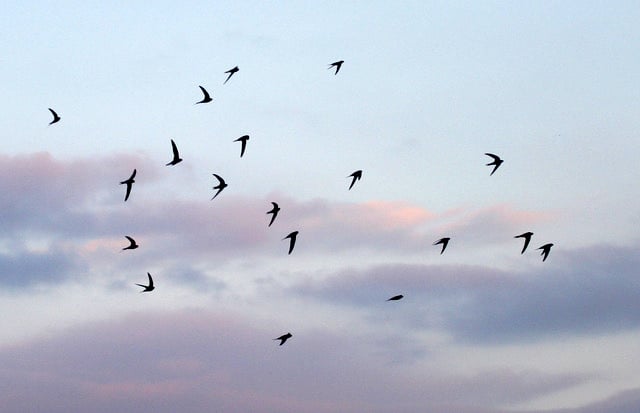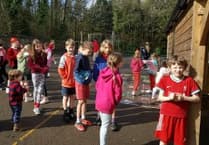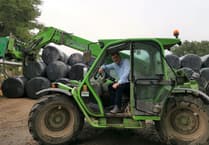THERE was a full house at Crediton Congregational Church on Thursday, March 14 for a richly illustrated and informative talk entitled "Crediton's Amazing Swifts!", hosted by Sustainable Crediton.
Edward Jackson explained many fascinating aspects of the lives of our Swifts: summer visitors with us for just four short months before they leave again to overwinter in central and south-east Africa.
Edward explained: "Larger and heavier than Swallows or House Martins, they are still only about half the weight of a Blackbird, but their long scimitar-shaped wings and aerodynamic shape make them the fastest birds in level flight.
"A few Swifts still breed in tree holes and rock faces, but the vast majority now nest in the equivalent spaces we have provided for them – high up in crevices under the eaves and roof tiles of our older homes and in other buildings such as churches. Once a Swift pair find a suitable nest site, it can be used for years and maybe centuries by successive generations.
"What also sets them apart from all other birds found in the UK is their almost exclusively aerial lifestyle. Continuously riding the air columns, often as high as 5,000 metres above the ground, their food is small insects and spiders (‘aerial plankton’) and they sleep – and typically mate – while on the wing!
"Last summer’s juveniles have stayed airborne ever since leaving their nests and will most likely not touch anything solid again until summer 2025, when they start prospecting for nest sites to raise their own young the following year.
"However, over the past 30 years there has been a dramatic 60 per cent decline in the UK Swift population, with estimates of well over one million birds ‘lost’."
Edward said that the reasons for this probably include loss of forest cover (and therefore food sources) in central Africa; increased frequency of storms in the Mediterranean; plus rapid parallel declines in insect availability here in the UK, often due to changes in land management.
He continued: "Most importantly, older buildings can be demolished, roofs re-laid or repaired and new uPVC eaves and soffit boards installed - all without homeowners realising that these actions can permanently destroy or block up any Swift nest sites.
"All these factors in combination have led in just a few short decades to Swifts being now classed as Endangered here in the UK."
To help reverse such losses here in Crediton and the surrounding villages Edward explained that there are lots of positive actions we can take.
He said it is vitally important to know exactly where Swifts are still nesting.
He continued: "A website and app called Swift Mapper is a handy way of recording all this information. This means owners of buildings can be made aware and given appropriate advice on how to protect their Swifts, for example by avoiding erecting scaffolding during the short breeding season.
"The birds are extremely clean in their habits and their very basic nests of feathers and other flimsy materials simply disintegrate through the winter. To help replace lost nest sites there are several types of special Swift nest boxes on the market and electronic ‘caller’ systems to encourage birds into new sites.
"However, it is essential to engage a trained and experienced person to carry out installations as boxes need ideally to be at least four metres above the ground, with plenty of clear ‘swoop space’ in front of them."
With the return of our Swifts expected by early May, Edward encouraged everyone to watch out for them and thrill at their aerial acrobatics and "social screaming”!
If you do locate an active nest site or would like further information or advice, please email him at: [email protected] .




